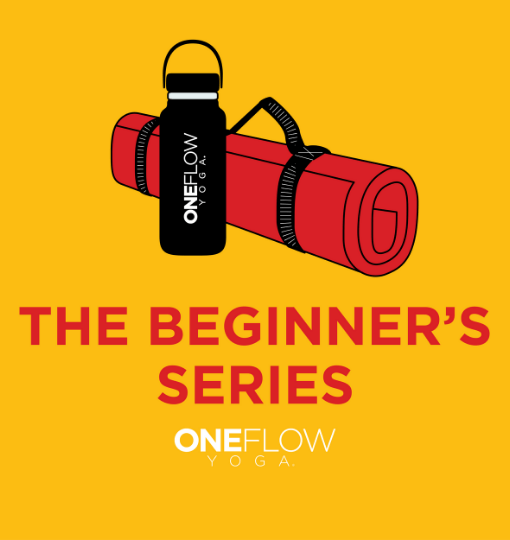Helpful Things to Know About Yoga
Yoga postures, by themselves, are just yoga postures.
The practice of yoga is the intention of looking within, to become mindful and conscious.
Yes, you can do yoga without doing yoga postures and you can do postures without doing yoga.
Understand this and you’ll realize how we end up with things like beer yoga (yoga postures and drinking beer), goat yoga (yoga postures with kids) and chocolate yoga (yoga postures with, you get the picture).
However, when you put the two together something very powerful happens.
The postures give us something to do. They are WHAT we are doing. Lift an arm. Raise a leg. Bend your knee.
HOW we do it is what matters.
In yoga we seek to move consciously. Becoming conscious of our movements can, in turn, determine how we move next.
There are many types of physical yoga practices—Iyengar, Vinyasa, Ashtanga, Jivamukti, etc. And there are many varied interpretations of each style, depending on the yoga studio you go to, so be sure to try a few before choosing one.
Purpose of Yoga
The purpose of the physical practice, also called asana, is multidimensional:
- To move
- To build strength, flexibility, endurance and resilience
- To cultivate awareness
- To offer something external you can feel, such as your leg working
- To follow the external sensations inward to notice what you think, feel and value
- To express an internal quality, like kindness, in an external action
- To be in challenging places and yet be calm, relaxed and even joyful.
Sthira Sukham Asanam
In order for a posture to be considered yoga, it must have two qualities, Sthira, Steadiness or Stability and Sukham, Relaxation or Joy.
Stability before Mobility
Always seek to be stable in a posture before moving. Otherwise it can be like juggling on a bicycle. It helps to know how to ride the bike first, without having multiple balls in the air.
Separate your feet or hands to give you a wider base and a more stable foundation.
We build postures, like a building, from the ground up. If the bottom floor, or feet, are not active and stable, then it makes it difficult for anything else to be.
Midline
This is an imaginary line used as a reference point down the middle of your mat. It goes from the ground upwards.
Straddle the midline with your feet for stability and support.
The midline also refers to the center of you and runs up the middle of your spine.
Finally, the midline is the philosophy to move towards what you value in life—your midline.
Breathing
Breathing is very important in yoga. It can help you to focus and keep you relaxed. As goes your breath, so goes your mind. If your breathing is face paced and frenetic, your mind will be too. If your breathing is steady, calm and even, the same will be true within you.
Move with the breath to keep a calm mind. Inevitably, this will require you to adjust how you do the postures to maintain a fluid, rhythmic breathing pattern known as ujjayi pranayama.
With time and practice, you can expand your capacity to breathe.
Tightness
You are tight for a reason. Your body is trying to support how you sit, stand and move the most by physically adjusting itself. It is trying to protect you.
However, your body was meant to move and it works with what is has. If one part of your body gets tight, or stuck, then it tries to move what is below or above it. Thus your lower back or knee pain might truly be coming from tight hips.
The good news, though, is that you can become more flexible.
Flexibility
Flexibility gets all of the headlines in yoga. However, yoga requires more strength than flexibility. You can develop both.
Balance of Strength and Flexibility
Each posture asks that something be strengthened in your body and something be opened. Strength and flexibility are partners and exist on a spectrum. You can be so strong that you can’t bend over to reach anything and so flexibility that you can’t do a pushup. A balance of the two produces a supple body that is powerful.
Sort-of Like This
Postures are more like an archetype—they are common examples. Your posture will look slightly different from another person’s because many things influence it including your level of experience, body, injuries, even what you had for lunch.
Modifications
Adjustments to the posture are called modifications and are there, initially, to help you practice safely and do the work of the posture. As your practice seasons you may modify to challenge yourself.
Advanced
The person who is skilled in yoga is able to be calm, steady and relaxed throughout the practice. It doesn’t matter if you can touch your toes or put your foot behind your head if you are panting and freaking out internally.
Mind and Body
There is no mind-body connection because they were never separate. The two are intertwined. This is why it feels so good, in your mind, when you move your body and reveals why your state of mind affects your physical well-being. In yoga we address both, as one.
Consistency
The benefits of yoga come from a consistent practice done regularly. It is hard to learn or see much success in any endeavor without patience and persistence. But with it—this is the stuff of drops of water cracking boulders.
Yoga is a Skill
Give yourself time to learn this practice. There is a famous story of a new student, Arjuna, learning yoga in the Bhagavad Gita. He was in a hurry, asked to see everything at once and was offered just that. The result was overwhelming and made his hair stand on end.
The process of your yoga practice unfolding is what it is all about. Savor it.
Books
You can’t learn yoga from a book as it’s about the experience. You have to go out and do it. You will practice more, learn more and be safer with the guidance of a skilled teacher.
Yoga is Meditation
We do to the postures to practice yoga—the feeling of deep connection and awareness.
True Teacher
The true teacher, or Sat Guru, is the one within your heart. The practice of yoga allows you to listen to your inner teacher, clearly, and to have the strength and courage to move from that place.





